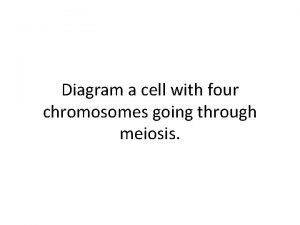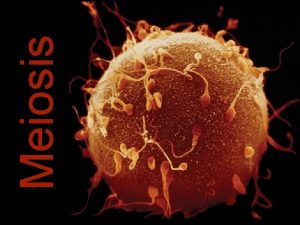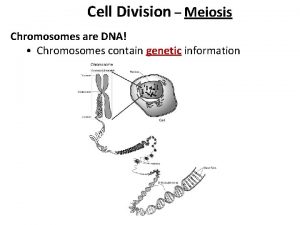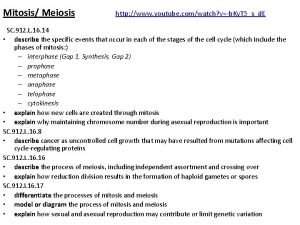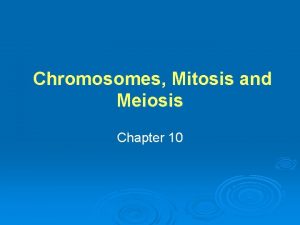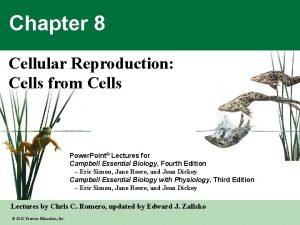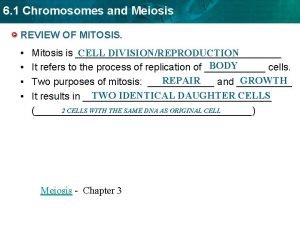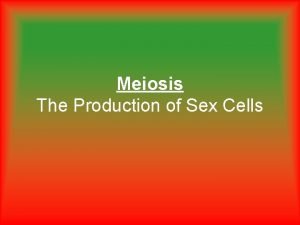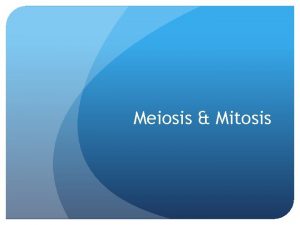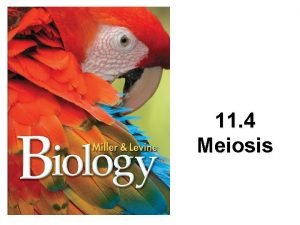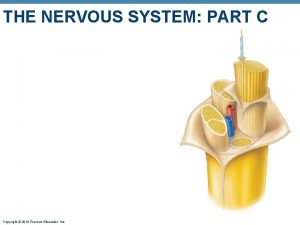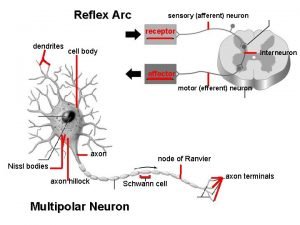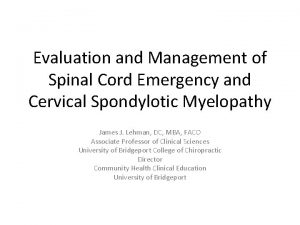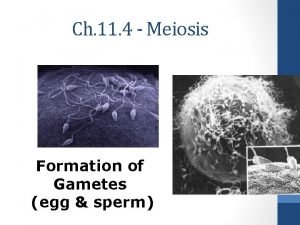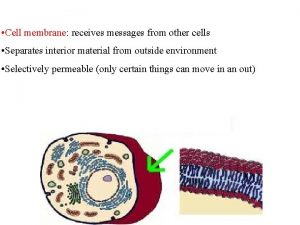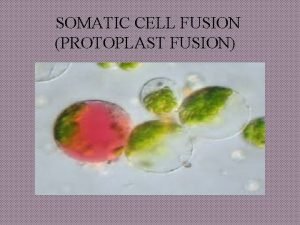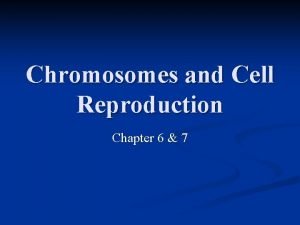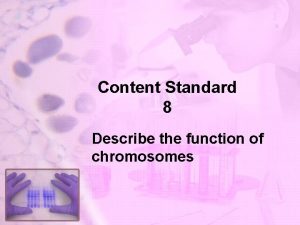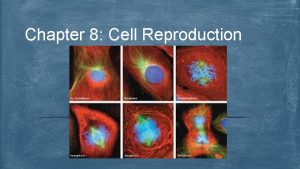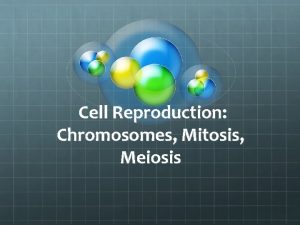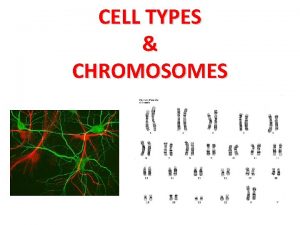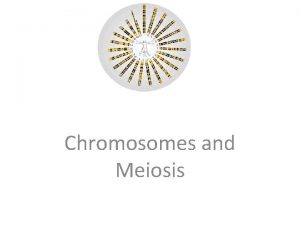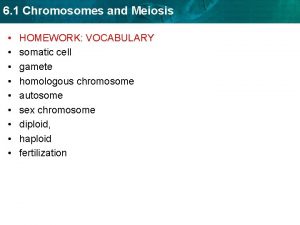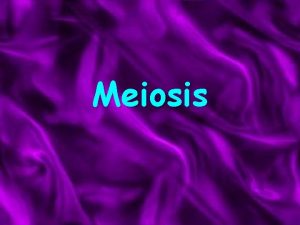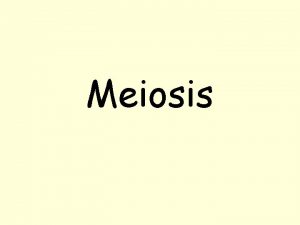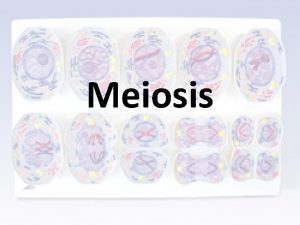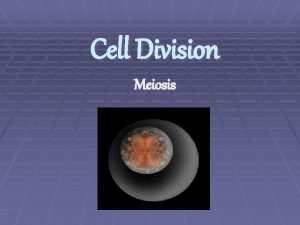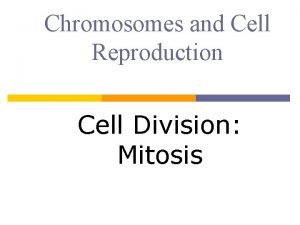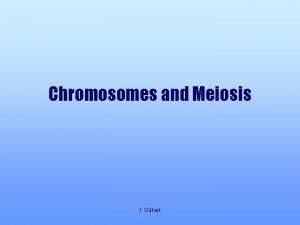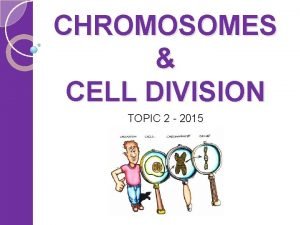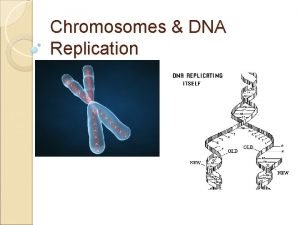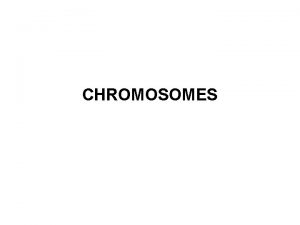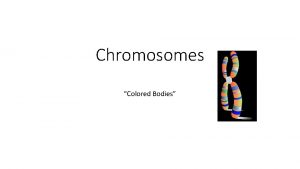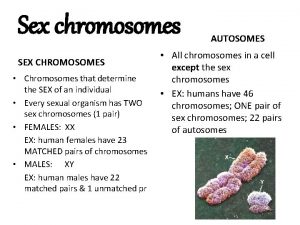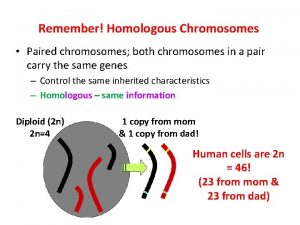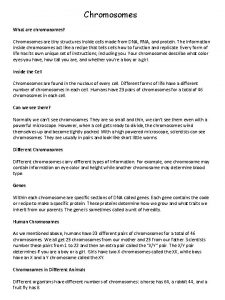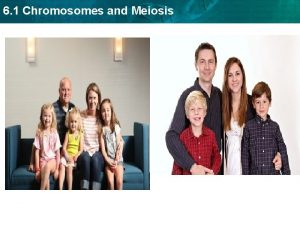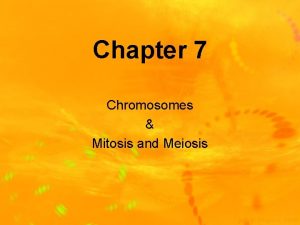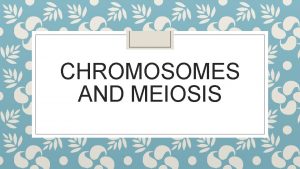Chromosomes and Meiosis Unit Cell Types 1 Somatic






























- Slides: 30

Chromosomes and Meiosis Unit

Cell Types 1) Somatic Cells (aka: body cells) - are diploid (2 n) - DNA not passed on

Cell Types 2) Gametes (aka: sex cells) - ex: ova (egg) and spermatozoa (sperm) - are haploid (1 n) - DNA passed on

Egg and Sperm Comparative Size

Diploid vs. Haploid Diploid cells have two copies of each chromosome: one copy from the mother and one from the father. Haploid cells have only one copy of each chromosome

Look at the following chromosome numbers of these living things. Do you notice anything about the numbers?

Chromosome Numbers of Various Living Things Algae Cow Dog Earthworm 148 60 78 36 Kangaroo Mosquito Pigeon Tiger 12 6 80 38 Shrimp Deer Turkey Horse 254 70 82 64 Hedgehog Giraffe Cabbage Carp 90 62 18 104

Chromosomes Each species has a characteristic number of chromosomes

That fact prevents this from happening

That fact allows this to happen

That fact allows this to happen

That fact allows this to happen Mule = male donkey and a female horse

That fact allows this to happen Liger Tigon

Chromosomes (cont) Types 1) Autosomes 2) Sex Chromosomes - female = XX male = XY

The sex of some species is determined by the temperature of the environment during incubation (mostly occurs in reptiles)

Chromosomes (cont) Humans have 46 chromosomes (23 pairs) - 44 autosomes (22 pairs) and 2 sex chromosomes (1 pair) - a diploid # (2 n) of 46 and a haploid # (1 n) of 23

Karyotype = picture of an individual’s chromosomes

Homologous Chromosomes vs. Sister Chromatids Homologous Chromosomes = two separate chromosomes, one from mom and one from dad - very similar in size and carry the same genes, but they are not copies of one another

Homologous Chromosomes vs. Sister Chromatids (cont) In contrast, each half of a duplicated chromosome is called a chromatid - together, the two chromatids are called sister chromatids - thus, sister chromatids refers to the duplicated chromosome that remain attached (by the centromere)

Homologous Chromosomes Homologous chromosomes (shown duplicated) are two separate chromosomes – one inherited from the mother and one from the father Sister Chromatids

Homologous Chromosomes vs. Sister Chromatids (cont) Homologous chromosomes split in Meiosis I Sister chromatids split in Meiosis II

Meiosis = a form of nuclear division that divides a diploid cell into a haploid cell - makes egg and sperm - 2 rounds of division (Meiosis I and Meiosis II)

Meiosis (cont) Meiosis I – divides homologous chromosomes Meiosis II – divides sister chromatids The overall process produces haploid cells.

Meiosis I

Meiosis II

Gametogenesis 1) spermatogenesis = sperm production (4 haploid cells) - even distribution

Spermatogenesis

Gametogenesis (cont) 2) oogenesis = egg production (1 haploid cell) - uneven distribution (polar bodies created)

Oogenesis

Comparing Mitosis and Meiosis Mitosis - Produces genetically identical cells - Results in diploid cells - Takes place throughout an organism’s life - Involved in asexual reproduction Meiosis - Produces genetically unique cells - Results in haploid cells - Takes place only at certain time in life cycle - Involved in sexual reproduction
 Cell with four chromosomes
Cell with four chromosomes Two daughter cells were formed
Two daughter cells were formed Crossing over in meiosis and mitosis
Crossing over in meiosis and mitosis Independent assortment in meiosis
Independent assortment in meiosis Meiosis 1 vs meiosis 2
Meiosis 1 vs meiosis 2 Non kinetochore microtubules
Non kinetochore microtubules Are chromosomes duplicated in interphase or in mitosis
Are chromosomes duplicated in interphase or in mitosis Chromosomes number is maintained mitosis or meiosis
Chromosomes number is maintained mitosis or meiosis Number of chromosomes in meiosis
Number of chromosomes in meiosis Number of chromosomes in meiosis
Number of chromosomes in meiosis Number of chromosomes in meiosis
Number of chromosomes in meiosis Meiosis and genetic variation answer key
Meiosis and genetic variation answer key Difference between meiosis 1 and 2
Difference between meiosis 1 and 2 Section quick check chapter 10 section 1 meiosis answer key
Section quick check chapter 10 section 1 meiosis answer key Meiosis introduction activity
Meiosis introduction activity Spinal cord diagram
Spinal cord diagram Gamete vs somatic cell
Gamete vs somatic cell Site of somatic motor neuron cell bodies
Site of somatic motor neuron cell bodies Lhermitte's sign
Lhermitte's sign Gamete vs somatic cell
Gamete vs somatic cell Germ cell vs somatic cells
Germ cell vs somatic cells Somatic cell nuclear transfer
Somatic cell nuclear transfer Somatic cell
Somatic cell Chapter 6 chromosomes and cell reproduction
Chapter 6 chromosomes and cell reproduction Mitosis vs meiosis
Mitosis vs meiosis Telophase diagram
Telophase diagram Chapter 29 somatic symptom and dissociative disorders
Chapter 29 somatic symptom and dissociative disorders Chromosomes functions
Chromosomes functions Cell with 4 chromosomes
Cell with 4 chromosomes Mitosis and meiosis
Mitosis and meiosis Meiosis
Meiosis
